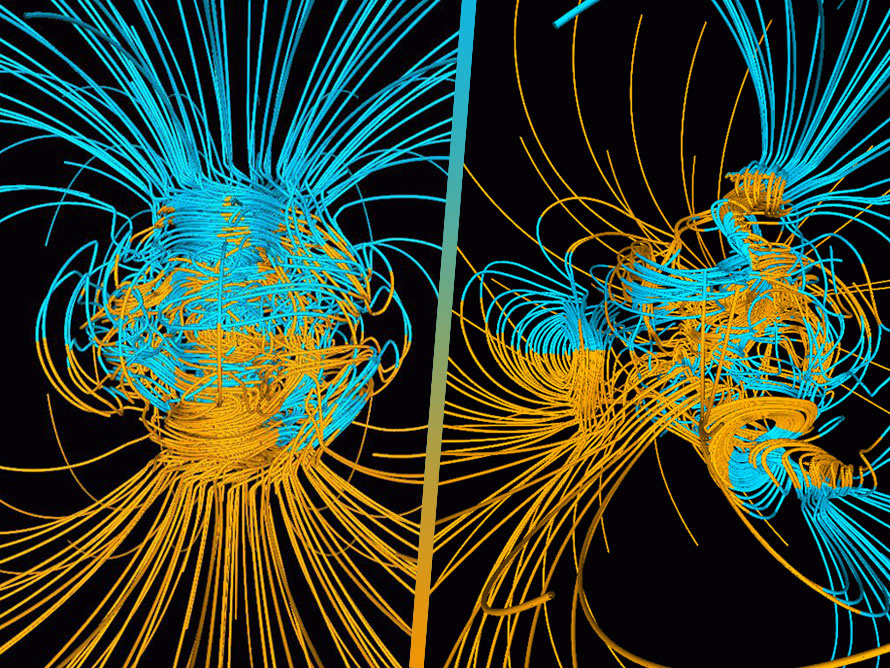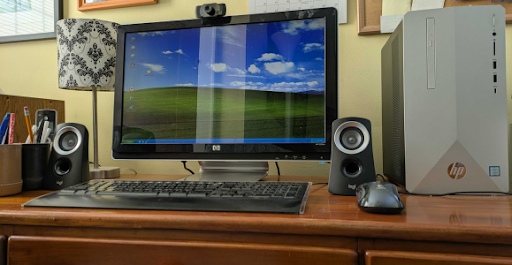According to NASA, the Earth’s magnetic poles are due for a shakeup, one that could prompt them to flip 180˚. I know, this sounds bad. First things first–and this may sound supremely obvious or very reassuring based on your level of knowledge on the subject–the flipping of the magnetic poles will not result in any of the following:
A. A chain eruption of the world’s volcanoes
B. Massive earthquakes and tsunamis
C. A complete technological breakdown a la Y2K
Okay, now that we’ve gone through our Day After Tomorrow doomsday checklist, it’s time to examine what actually might happen. In order to do this however, we have to look back in time. Based on geological studies, we know that for the past 20 million years, Earth’s magnetic poles have flipped roughly every 200,000-300,000 years. It’s been close to 800,000 years since the last reversal, so we’re overdue. That said, this flip probably won’t happen overnight. In fact, there are estimates that indicate changes in the past have occurred slowly, taking a few thousand years to fully develop. This is both a good and a bad thing. It’s good, because if the poles shift slowly, we’ll be able to address any unforeseen consequences as they occur, rather than having a bunch of problems dropped into our lap all at once. The problem is, this slow rate of change may leave our atmosphere vulnerable.
Luckily for us, Earth is surrounded by a powerful magnetic field that protects the surface from cosmic radiation. During a geomagnetic reversal however, this field is temporarily weakened, providing less protection against solar flares. If a magnetic reversal occurs, holes in the ozone, like the one in Antarctica, could become the norm. On a positive note, these holes wouldn’t be permanent, but their presence would almost certainly correspond with an increase in skin cancer diagnoses due to the abundance of ultraviolet rays that would penetrate our atmosphere. Thankfully though, the amount cosmic radiation that gets through wasn’t enough to cause widespread genetic mutations in the past, and claims that magnetic pole reversal is related to mass extinction are spurious at best. While a complete thinning of the Earth’s magnetic field would have some serious side effects, it’s nearly impossible to predict the degree to which it would be weakened if the poles do flip, if being the operative word.
That’s right, despite the fact that Earth’s magnetic field’s strength has been decreasing for at least the last 160 years, there’s a chance that the poles won’t flip at all, that the process will be aborted. There is a precedence for this, as a similar phenomenon occurred about 40,000 years ago.
Still, if our poles do flip completely, there will be some consequences. For one, campers and wilderness experts will probably have to buy new compasses. According to Nadia Drake, north will be in Antarctica and south will be somewhere in Canada. The true victims in the event of geomagnetic reversal however, will be migratory animals such as birds and sea turtles. There’s a significant chance they’ll have a hard time resetting their migration patterns. That said, if the fossil record is to be believed, animals have been able to sort themselves out in the past. There’s no reason to believe that today’s birds wouldn’t eventually adjust to the new polarity.
In the end, the flipping of our magnetic poles sounds much more frightening than it is. The worst case scenario is one in which we all wear a little more sunscreen and sales of UV-resistant windows go way up, and there’s no telling whether or not this will happen. There is one extremely cool benefit of a geomagnetic shift: the Auroras Borealis–a reaction between the sun’s particles and our atmosphere– will be visible all over the planet. Whether they’ll retain the name “Northern Lights” is a matter of speculation however.
- Scientists May Have Found The Birthplace Of Magnetic Field … ›
- 2012: Magnetic Pole Reversal Happens All The (Geologic) Time ›
- Why You (Probably) Shouldn’t Worry About Earth’s Magnetic Poles … ›
- Is the Earth’s magnetic field due for a pole reversal? – Astronomy … ›
- What Really Happens When Earth’s Magnetic Field Flips? ›





